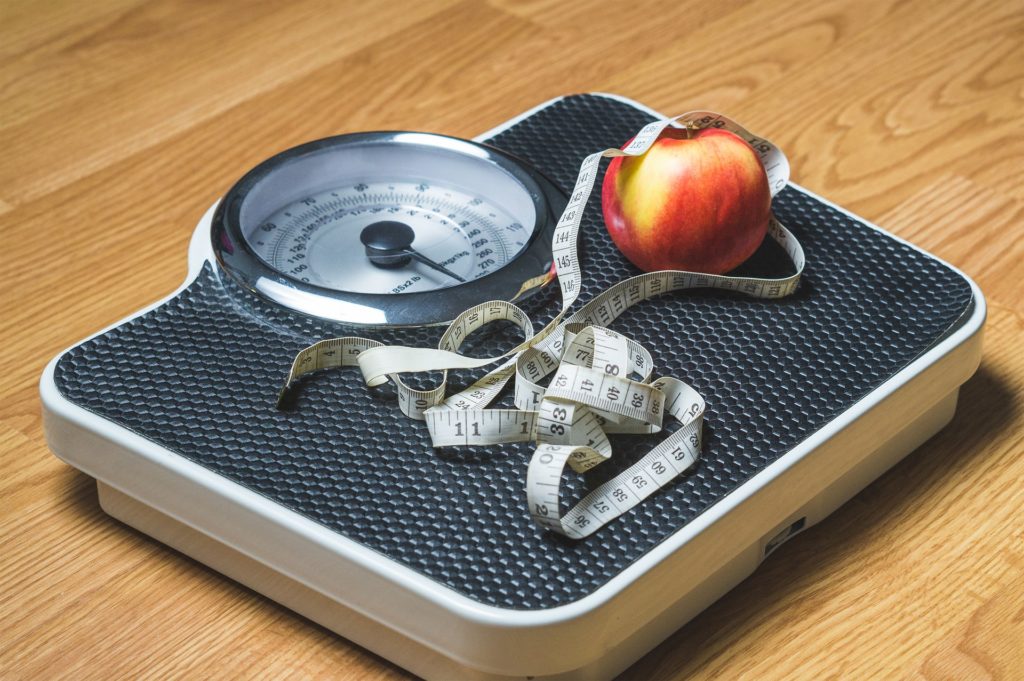If you’re trying to lose weight, understanding how your body uses the food you eat is important. The key to weight loss is:
“Weight loss = Inputting less than your body needs to maintain its current weight.”
This means to lose body fat, you need to eat less than the amount of energy your body uses each day. So basically, calories coming in need to be fewer than those going “out” or being used by your body each day.
Energy is measured in calories or kilojoules. You gain energy from the food you eat, and you expend energy by moving, breathing, performing basic body functions and exercising. For example, eating a slice of bread supplies your body with around 70 calories of energy. Going for a 30 minute walk burns (uses) around 90 calories.
So how do you know how many calories you need to eat each day, and how much energy each food supplies your body?
Food calories
Keeping a food diary is a great tool for tracking everything you eat and drink during the day. You can use our Food.com.au customised meal plans or substitute your own meal ideas to help you keep track of your calorie intake. Use your Food Diary to add up all the calories you consume over the day, so you can keep track of whether you’re meeting your targets.
For weight loss, the aim is to reduce your caloric intake, so it’s less than the calories you currently eat which maintain your weight now. However, cutting too many calories will actually slow your weight loss. When you don’t eat enough food, your body goes into starvation mode, and starts holding onto fat in order to help your body survive through the famine it believes you’re experiencing. Women should never consume less than 1200 food calories per day; and men should make sure they eat at least 1500 calories per day.
Speak to a dietitian, or use your Personal Profile on Food.com.au to determine your recommended daily calorie intake. Then, stick as closely as possible to this recommendation.
The best way to make use of your calorie allowance is to choose low-calorie, nutrient-rich foods which are filling and satisfying.
Compare these two examples, showing the amounts of food you can eat for 300 calories.
| For around 300 calories you could eat: |
|
| Or you could choose to eat all of this for around 300 calories: |
|
It’s evident that, even though you’re monitoring your calorie intake, if you choose your foods wisely you don’t need to feel hungry or deprived – there’s even room for occasional treats!
Some good examples of tasty and filling foods are:
- Lean protein sources, such as skinless chicken, lean beef, tofu, salmon and tuna
- Low-fat dairy products, such as low-fat yoghurt, skim milk, low-fat cheese and diet dairy desserts
- Vegetables – try raw veggies for snacking on and reserve at least half of your plate for salad or vegetables at lunch and dinner
- Fruits – delicious for snacks or breakfast. Experiment with different types of fruits, such as berries, kiwi fruit, papaya, pineapple and melons
- Whole grain products, such as grainy breads and high-fibre cereals
Exercise calories
Regular exercise is crucial to achieving your weight loss goals. Exercise also has many benefits for your health (mental and physical) and fitness.
Aim to exercise for at least 30 minutes per day. You may need to work up to this amount if you’ve never exercised before.
There are many ways to exercise, so choose something that you enjoy – whether it’s walking, cycling, swimming or dancing!
Use our Exercise Diary to track the time you have exercised for, and it will also compute the amount of calories you burnt while participating.
Benefits of exercising:
- Increases metabolism and helps your body burn calories more efficiently
- Gives you more energy
- Improves heart health
- Speeds up weight loss
- Tones your body
- Increases your fitness
Net calories
The amount of food you eat per day (intake) minus the amount of energy you burn through daily activities and exercise (output) equals your net calories. Your Food and Exercise Diary can compute this for you.
As exercising burns calories, workout out each day will help you lose weight faster. It also means you can eat a little more each day. Your Diary keeps track of it all and tells you whether you’re on track to meet your Net calories target.
Daily Goals
Each day, aim to meet the following targets:
- Exercise for at least 30 minutes per day
- Meet your Net calories target
- Drink at least 6 glasses of fluid per day
Regularly achieving these goals will help you reach your weight loss goals faster.

